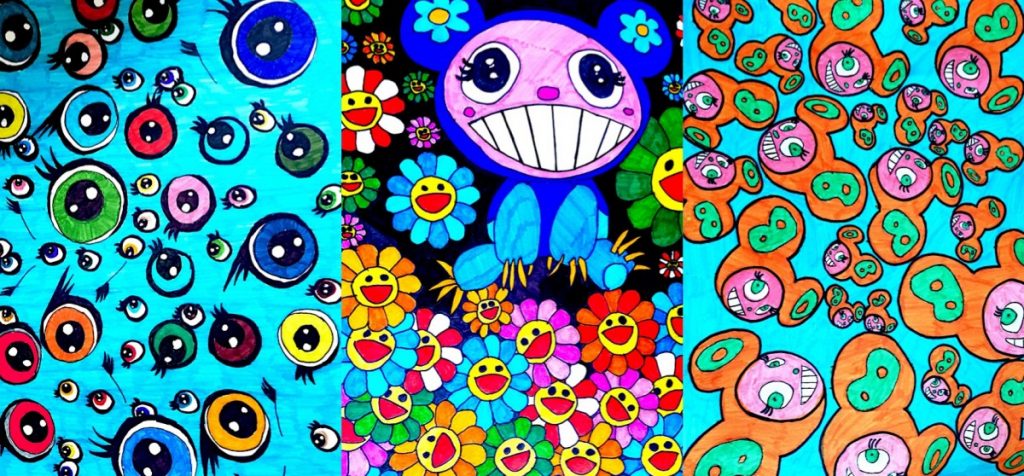
This great lesson was created by the art teacher Marco Farinelli. I share this interesting work and the images of the work step by step. The classes involved are the 6th grade of the Leonardo da Vinci Middle School of Ciampino, in Italy. The work is inspired by the contemporary Japanese artist Takashi Murakami, known for his works that reproduce the styles of the mass iconography of his country. His figures have clear connections to Japanese anime and manga and are re-proposed by the artist as monumental icons of contemporary Japanese culture and society. He has often been called a POP artist and compared to Andy Warhol.
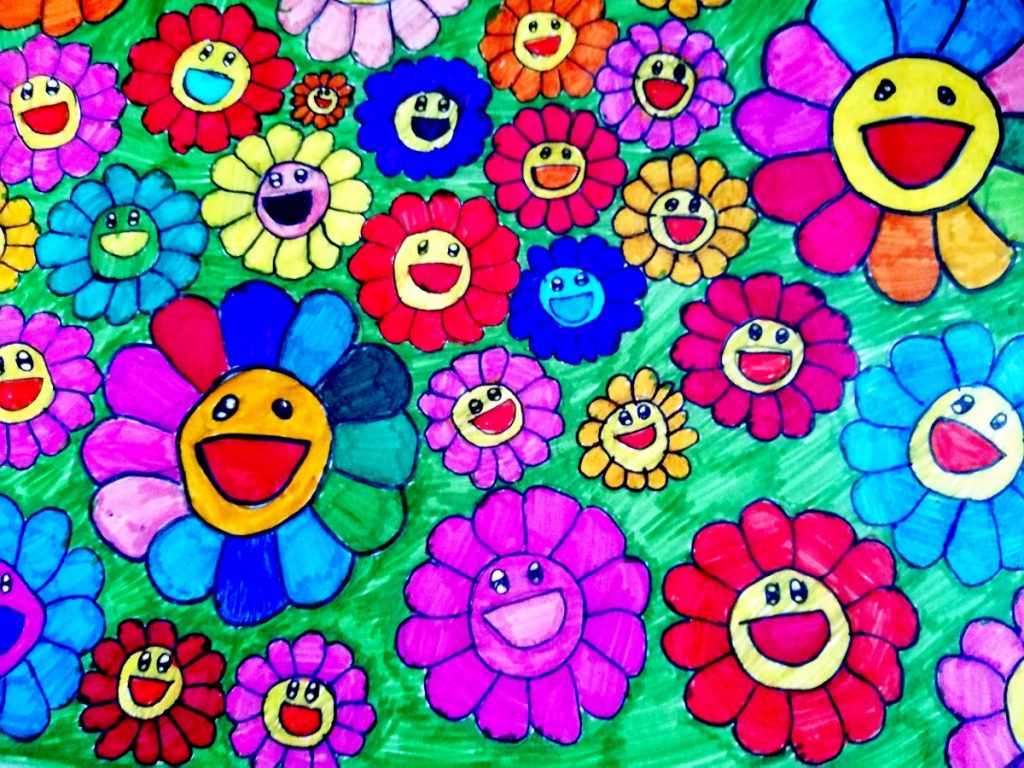
The topic of this lesson is the repetition of PATTERNS. Students chose one or more Murakami’s drawing on photocopies and copied them with a pencil on tracing paper. After copying drawings of different sizes on tracing paper students re-traced them on a drawing paper, repeating them and covering the whole surface of the sheet. Patterns can be repeated even in a symmetrical way.



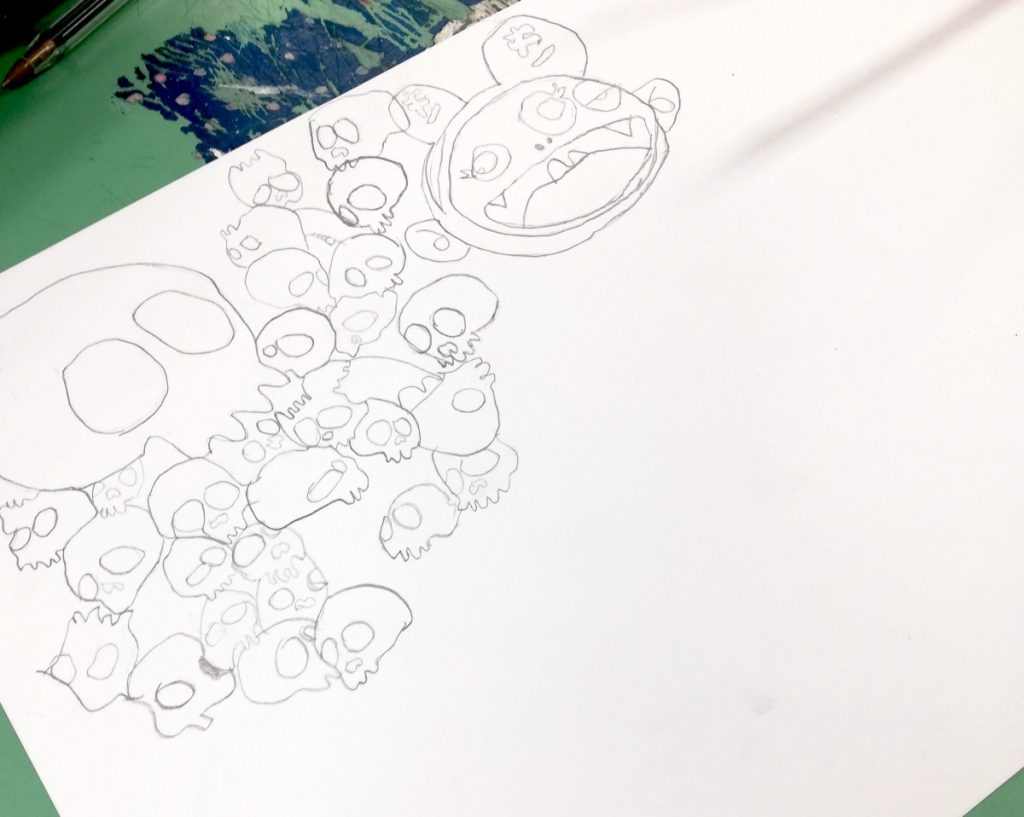
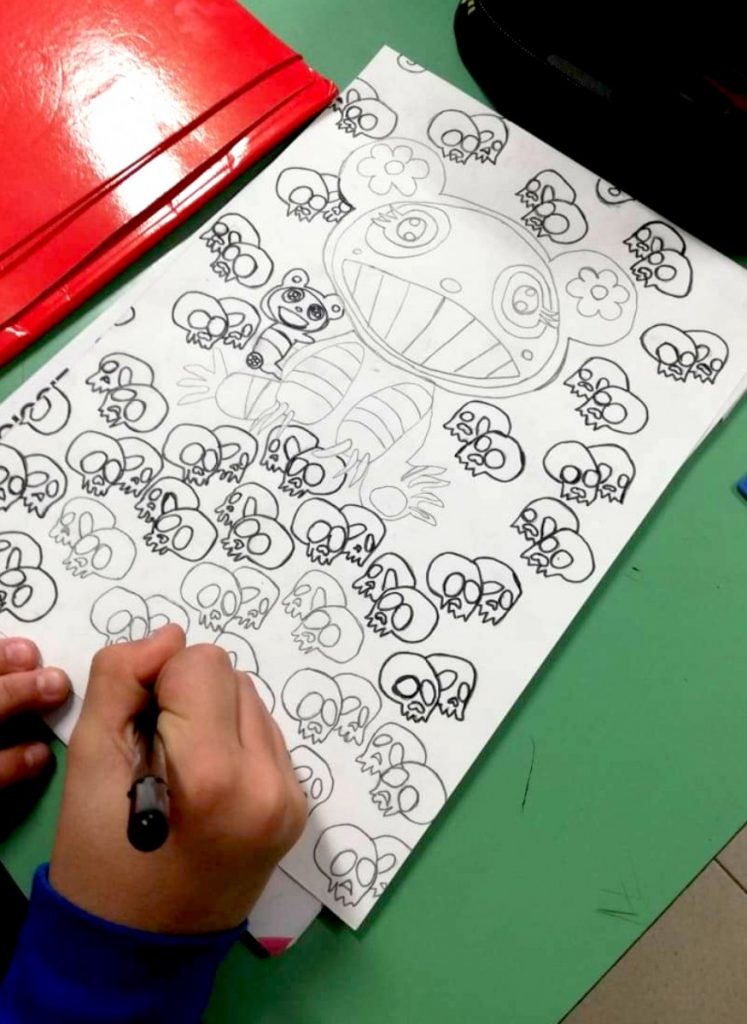
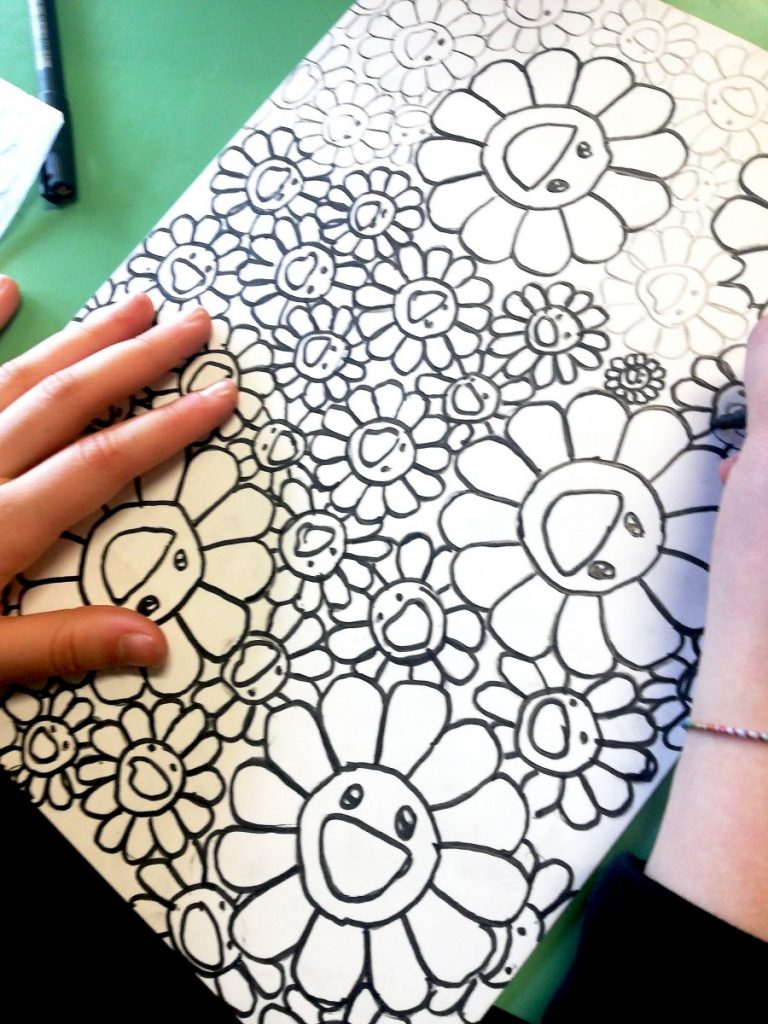
The drawing was traced over with a black marker and then colored with bright, solid colors using felt-tip pens and colored pencils.
The effect is amazing, very POP and contemporary!
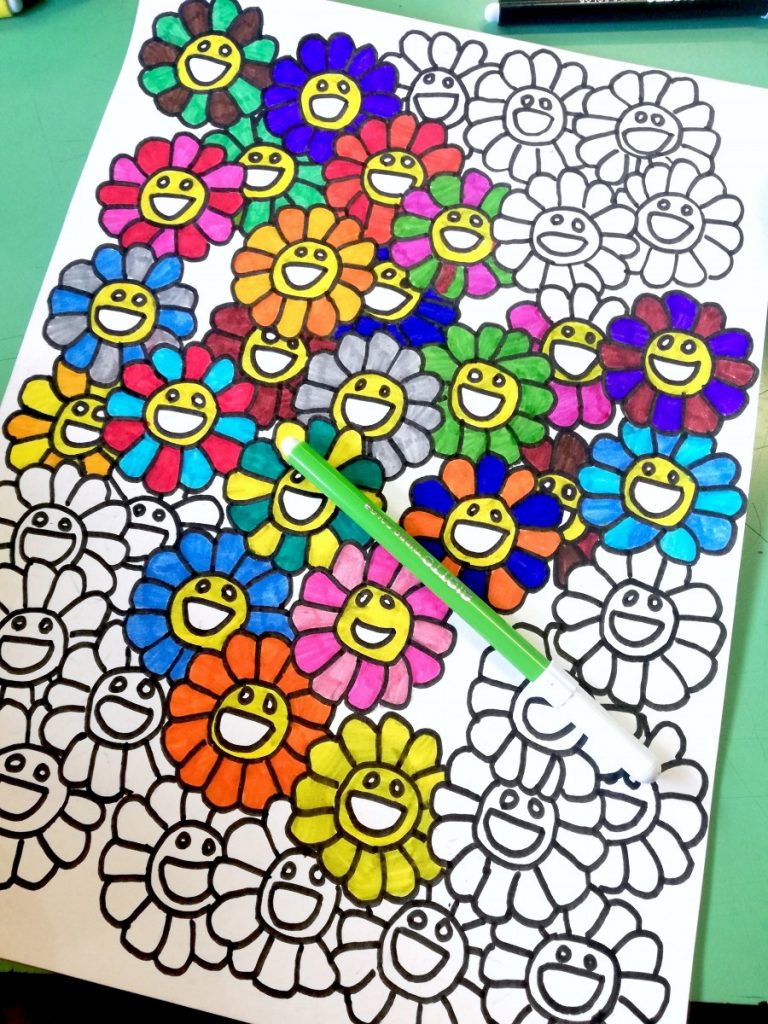
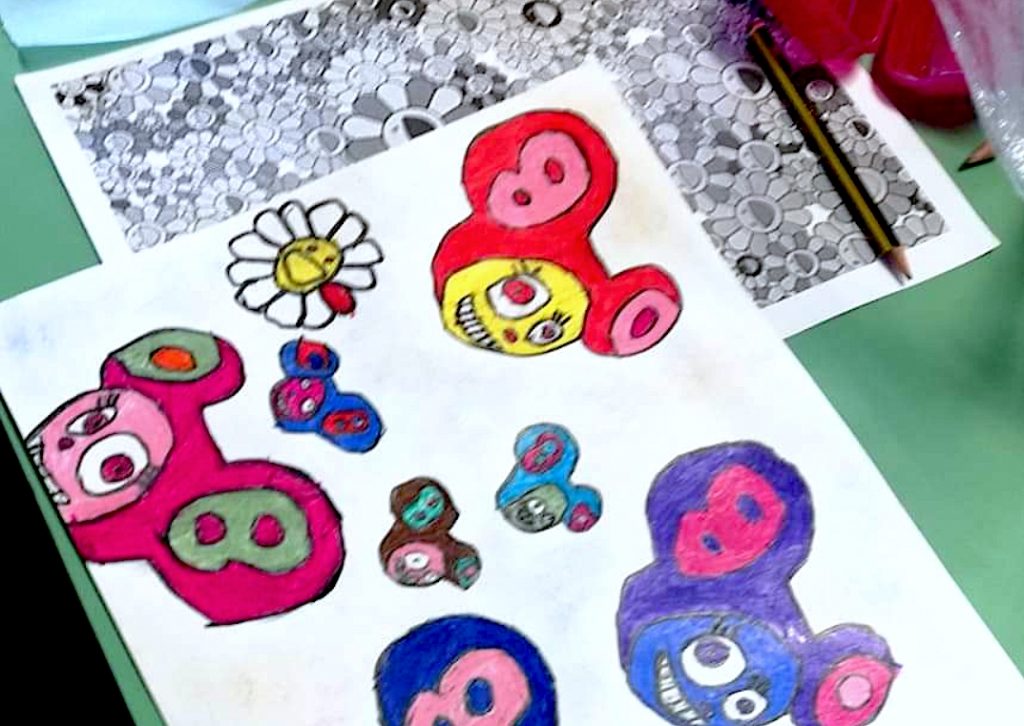



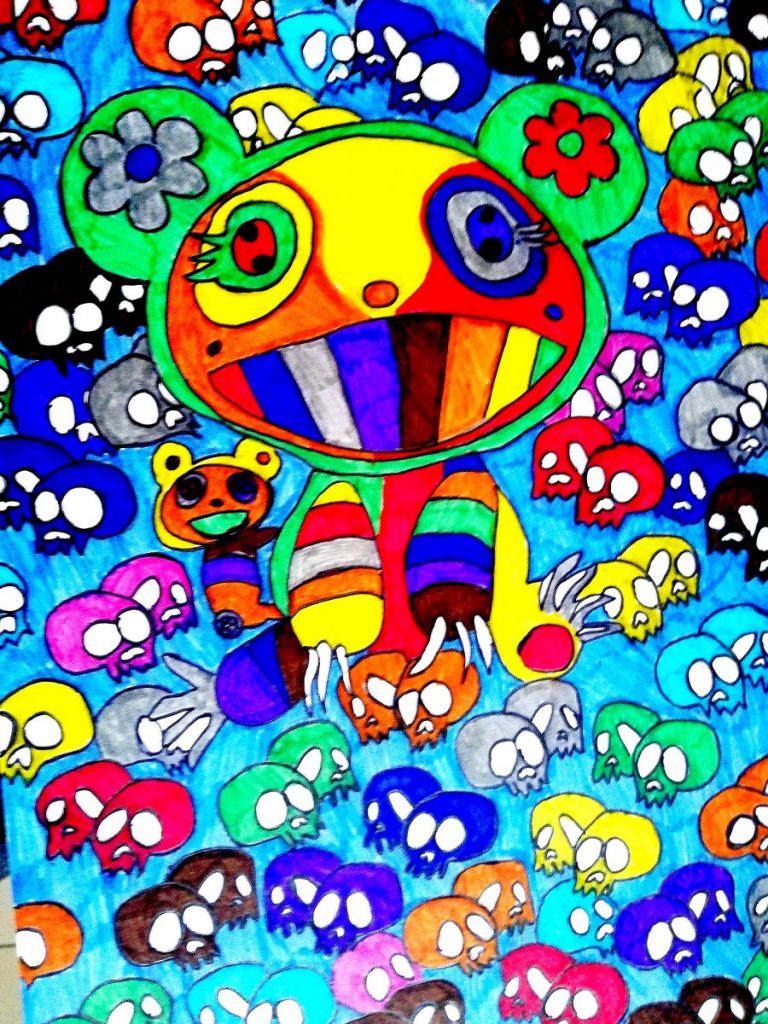
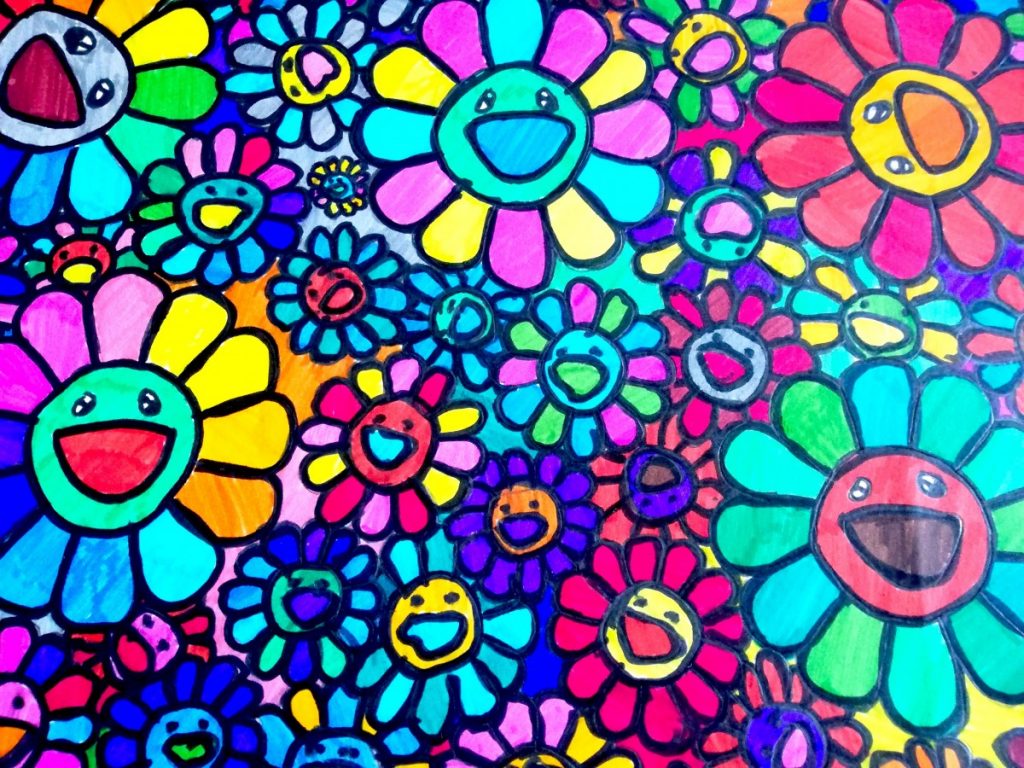
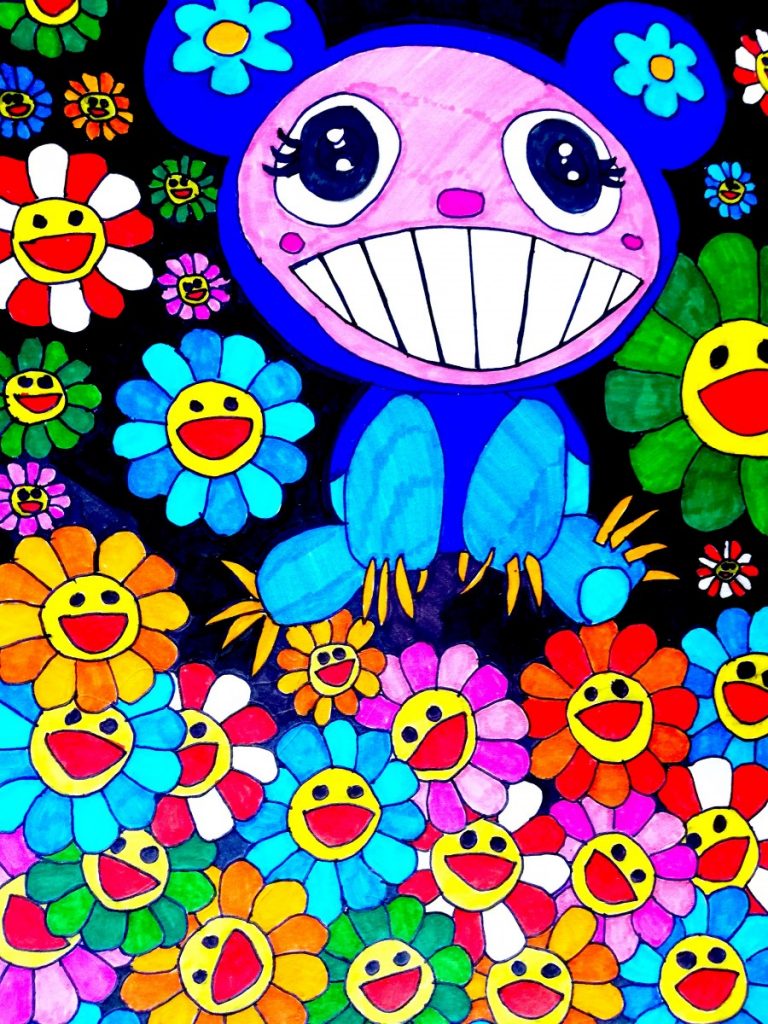
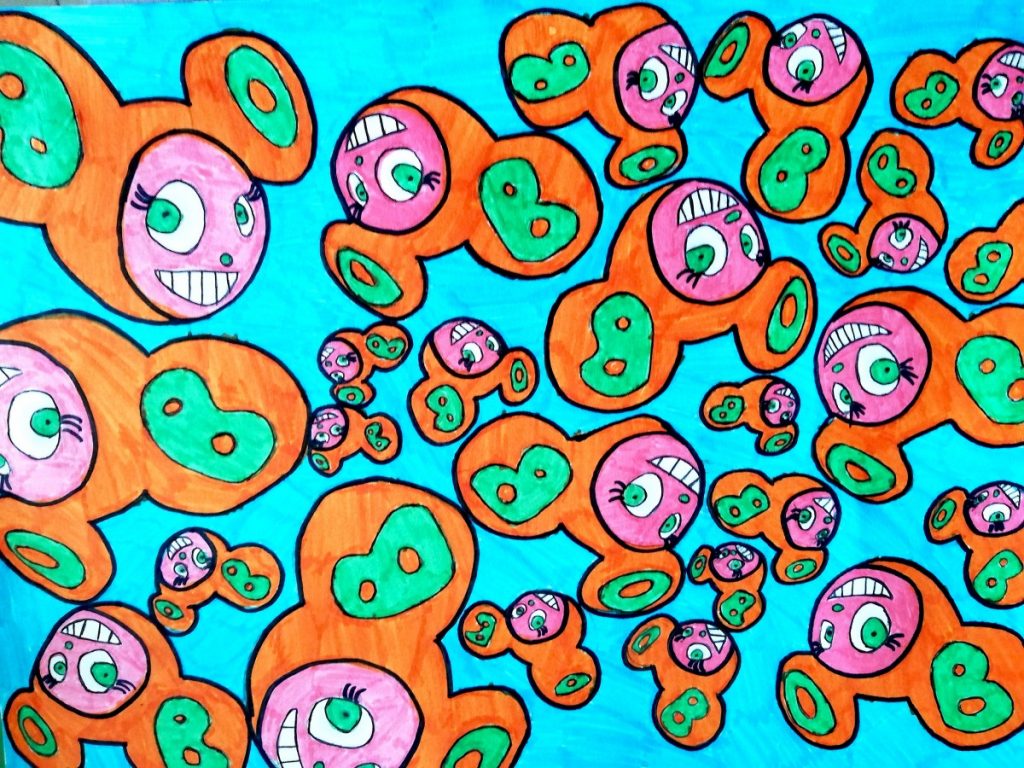
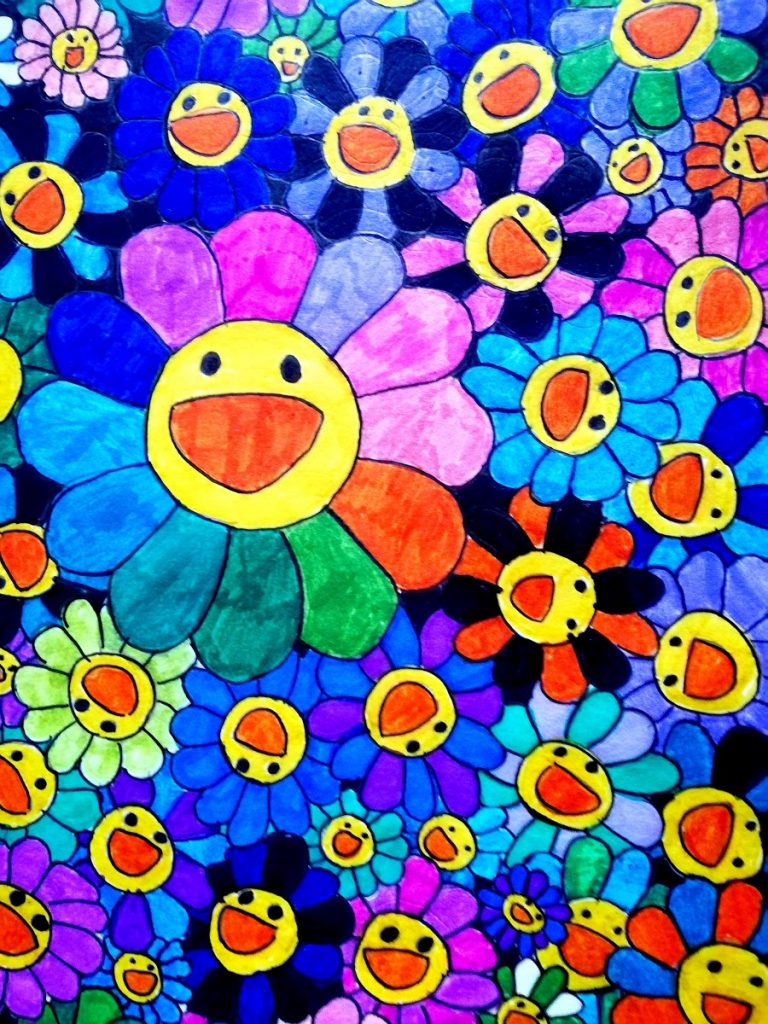
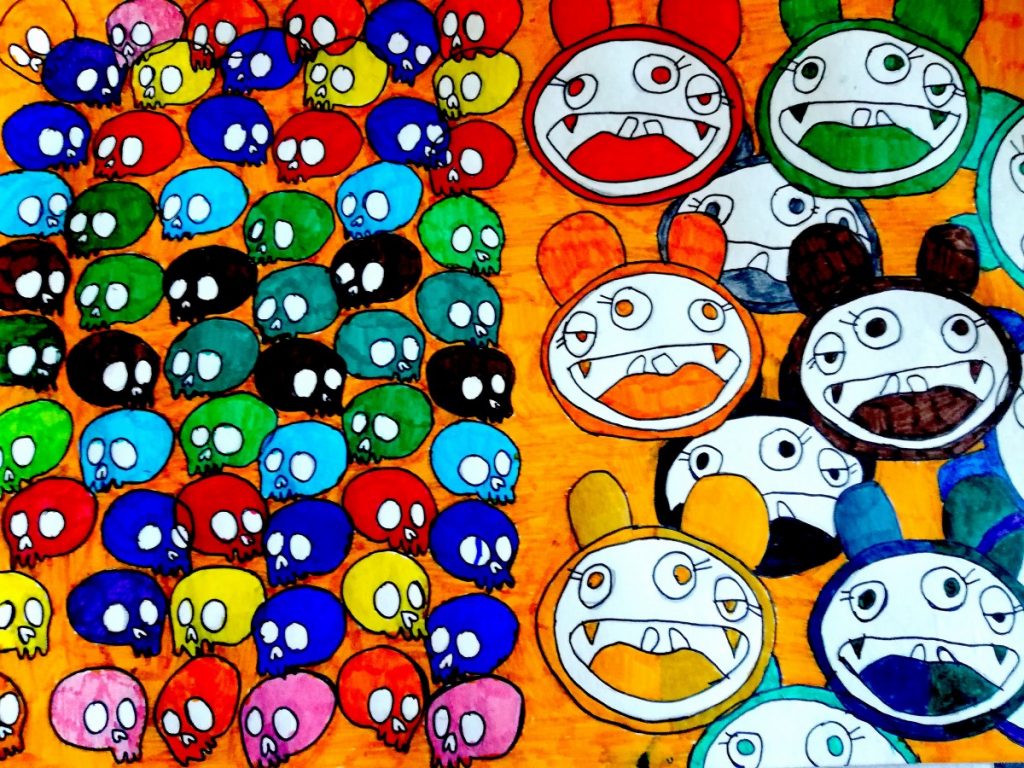

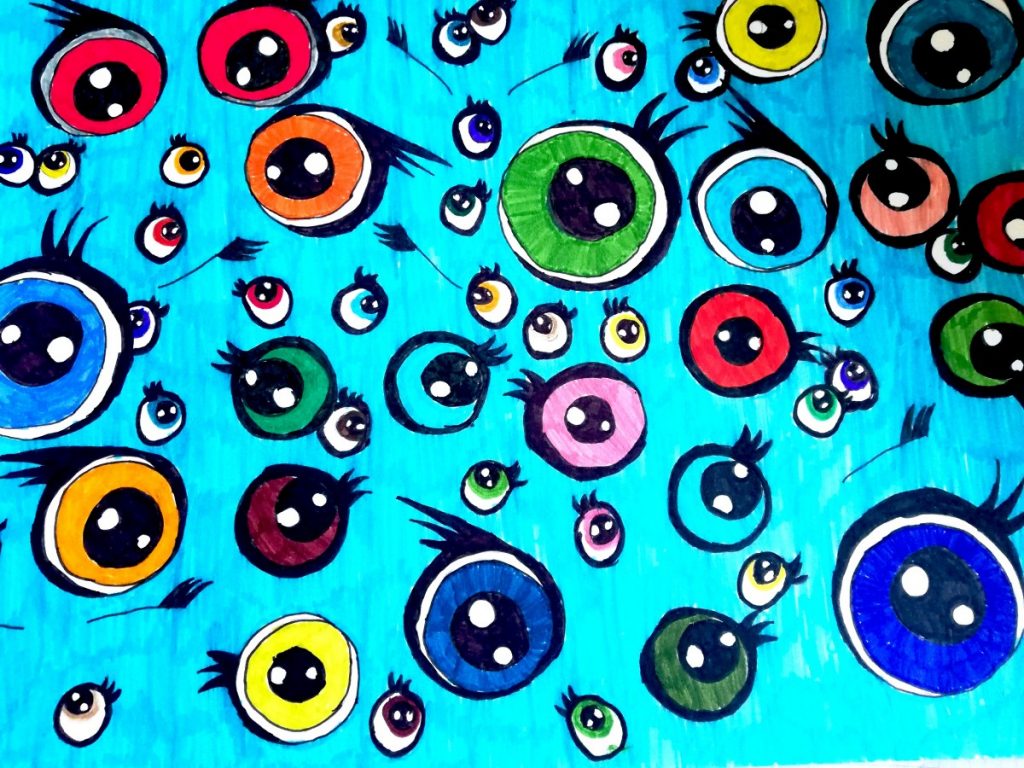
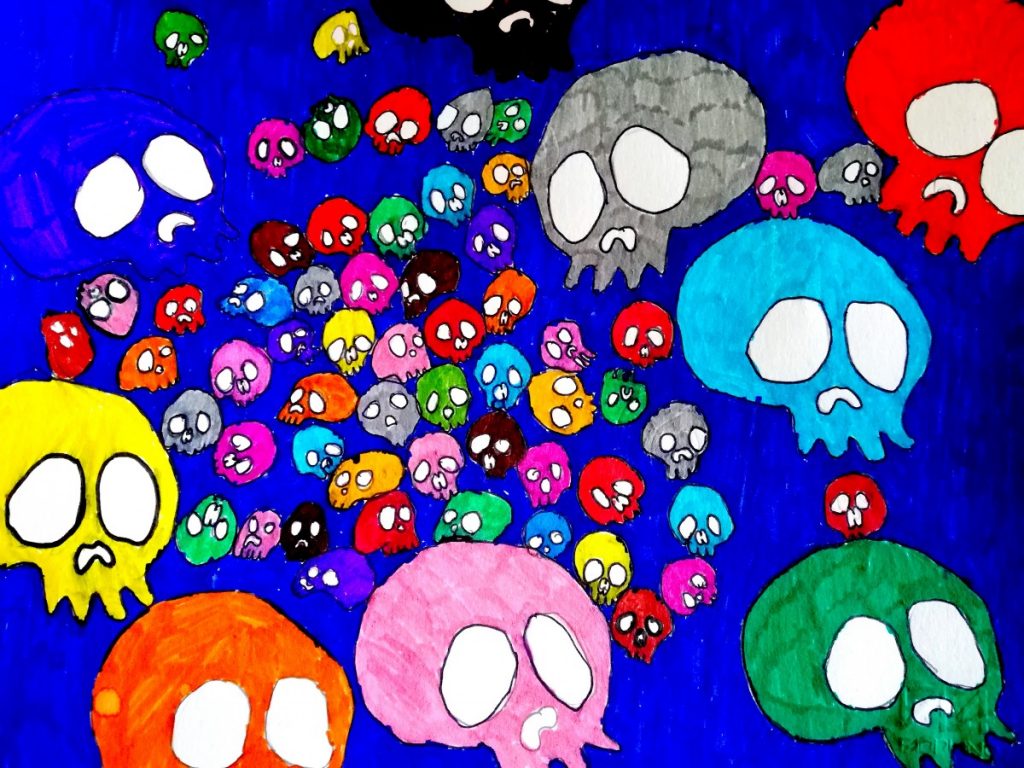



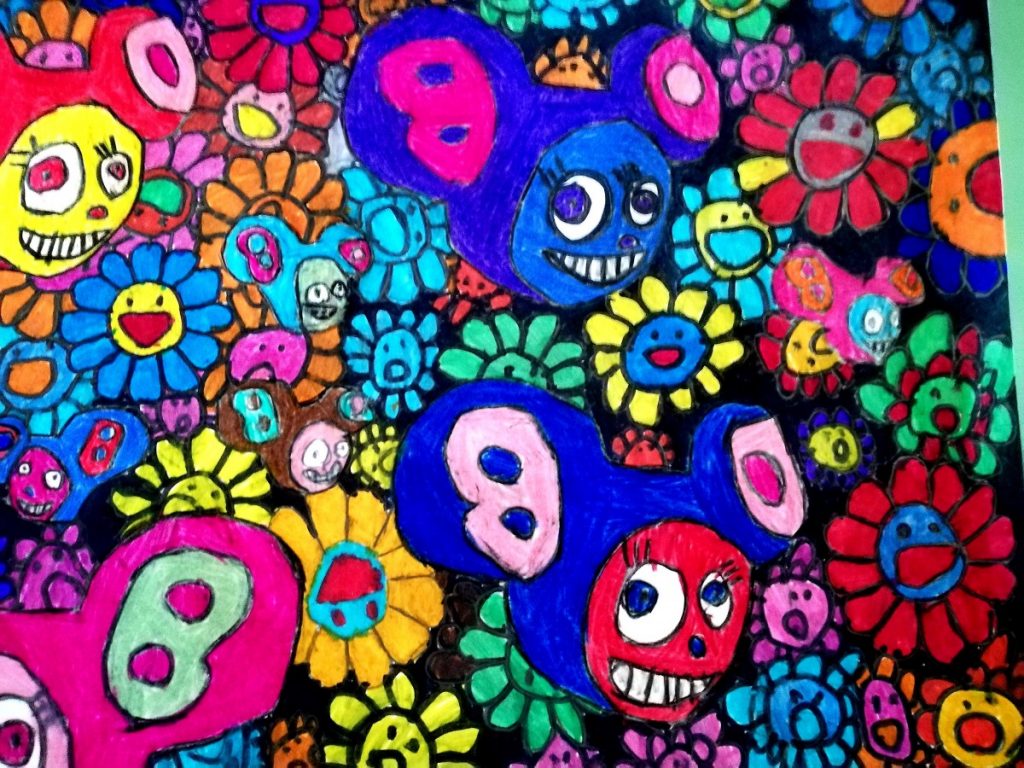

I was thinking of including Murakami’s work in my curriculum however I am concerned that students may google some of his more recent works like Hiropon. I am a Art Ed student and not in a classroom so less experienced in how students and teachers may react. I am wondering if there is a risk in showing Murakami’s work. I personally like his work however think more recent work brings in more difficult conversations.
Hi Julie, depend on the age of the students and the task they need to achieve. If they are in Primary school and they have to google the artist’s works is better to avoid the artist, but if you work in a secondary school you can even try to introduce the works and open a debate. In this activity, we gave just photocopies of flowers and skulls and the task was just practical, without searching online information or works about the artist. You can even lead the lesson and show a presentation avoiding some works